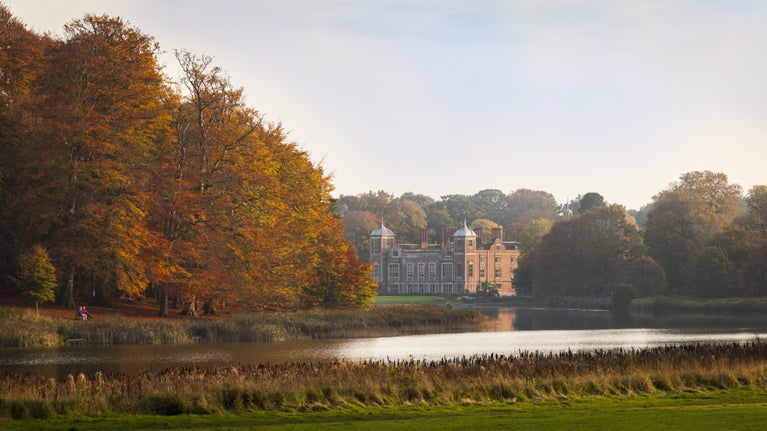
For everyone, for ever
We protect and care for places so people and nature can thrive. Find out who we are and what we stand for.

Discover how we’re looking after 157 miles of Welsh coastline and how we’re adapting to the challenges of climate change. From creating new coastal habitats, to working with communities facing rising sea levels, learn about our work to protect the coasts of Wales for people and nature for future generations.
Our dynamic coastline has long been a place of change, but with sea levels rising by up to 1 metre over the next 100 years and our climate becoming stormier, we can expect life on the coast to become ever more threatened.
Over the last few years, we’ve been identifying stretches of the 157 miles of Welsh coastline in our care where flooding and erosion is expected. We’ve also determined what the likely impacts will be. These are our 'coastal hotspots'. At each of the following sites we're preparing Coastal Adaptation Strategies to inform our management decisions:
A changing coastline isn’t necessarily a bad thing. Many coastal habitats, such as sand dunes and salt marsh, are constantly shifting and the plants and animals that live there adapt to changing environments. However, when these dynamic habitats can't shift naturally inland, we lose them along with their wildlife.
Habitats can become trapped or squeezed, between rising sea levels on one side, and infrastructure such as sea walls, roads and natural features such as hills on the other. This concept is known as coastal squeeze. Where possible, we avoid getting into a costly cycle of building and repairing sea defences, and instead work with nature by taking an adaptive approach.

By not maintaining or removing hard defences we allow valuable and rare habitats to ‘roll back’ further inland so that they are more resilient to rising sea levels. The areas where it’s possible to roll back are important for keeping coastal wildlife thriving. Working with our neighbours, we're putting these principles into action at Abereiddi in Pembrokeshire.
Coastal squeeze means that an equivalent to nearly 250 football pitches of salt marsh is being lost every year. Where a disappearing salt marsh can't be ‘rolled back’, then we need to look for suitable sites elsewhere. At Cwm Ivy Marsh in the Gower, our project has proven an excellent example of creating compensatory habitats.
The type of adaptive approaches we can take will vary from site to site. In some places, this means forming partnerships with neighbours to allow nature to roll back. In others, we need to work together with communities to plan for a time when homes and businesses will be threatened by erosion or flooding. Our Cemlyn vision demonstrates how we are planning for change through managed realignment.
Find out how we’re working towards a healthy, resilient, wildlife-rich coastline that future generations can enjoy. These are some of the sites we’re looking after on the coasts of Wales.


We protect and care for places so people and nature can thrive. Find out who we are and what we stand for.
We’re carefully managing meadows across Wales to help them to thrive. Find out more about our work and discover where you can see meadows in Wales.

From hydroelectricity in Snowdonia to nurturing orchids with biomass at Dyffryn Gardens, learn how renewable energy projects in Wales are helping combat climate change.

Discover how our nature friendly farming practices are protecting rare habitats and species, preventing floods, and helping wildlife thrive in Wales.

Have a nature adventure in Wales and discover all kinds of wildlife, from the famous otters of Bosherston Lakes in Pembrokeshire, to the red squirrels of Plas Newydd in North Wales.

Find out about wildlife and our work at Cwm Ivy salt marsh in Whiteford and North Gower, from monitoring rare species to learning about the favourite food of otters.

Every 20 years a census is carried out to assess the size of the Manx shearwater colony on islands off the Pembrokeshire coast. The latest survey showed very promising results.

Find out how adopting ancient farming practices has helped wildlife on the Gower.

Renewable energy projects in Craflwyn and Beddgelert are transforming the way power is generated and funding vital conservation.